Fiberglass pools are valued for their smooth, non-porous surface and relatively low maintenance costs, but over time they can develop cracks or other defects that impair their functionality and appearance. Repairing a fiberglass pool with a thick reinforced PVC membrane (e.g., Cefil 60 mil pool liner) is a cost-effective, simple, and durable solution compared to traditional fiberglass repair or complete pool replacement. This article explains why repairing with a PVC membrane is more effective, describes the repair process, and highlights why it is easier and cheaper for homeowners.
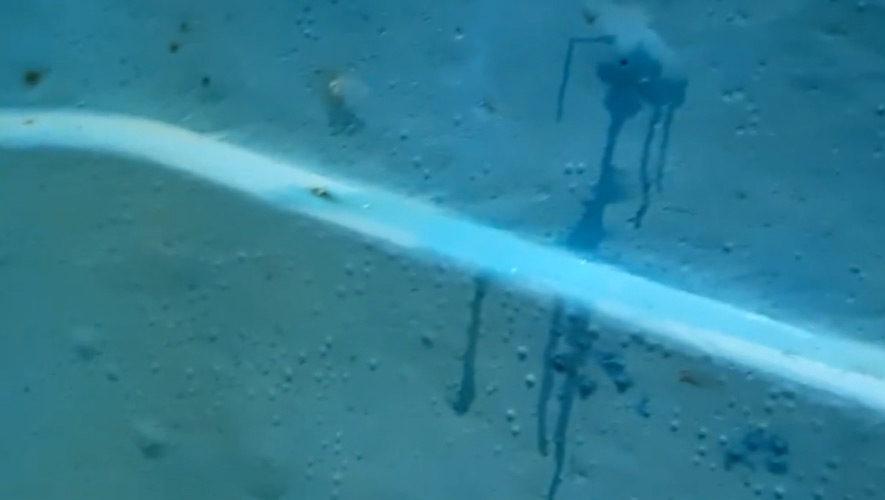
Why Choose a Thick PVC Membrane for Fiberglass Pool Repairs?
Fiberglass pools, with a typical lifespan of 15–25 years, can suffer from gelcoat fading, cracks, or blisters, leading to leaks, staining, or aesthetic decline. Traditional repairs, such as patching cracks or reapplying gelcoat, cost $1,500–$4,000 and may last only a few years. A full pool replacement can exceed $50,000. In contrast, a thick reinforced PVC membrane, made of durable polyvinyl chloride with a polyester mesh core, provides a watertight, low-maintenance lining that seals cracks, resists algae and UV radiation, and lasts 20–30 years. This approach transforms an aging fiberglass pool into like-new condition for a fraction of the cost ($8,000–$15,000).

Benefits of PVC Membrane Repairs
- Watertight Seal: Covers cracks and leaks without requiring extensive fiberglass repairs, ensuring no water loss.
- Cost Savings: Repairs cost $8,000–$15,000, compared to $50,000–$100,000 for a new pool or $5,000–$10,000 for recurring gelcoat repairs.
- Low Maintenance: The non-porous PVC surface resists algae and stains, reducing chemical use.
- Ease of Installation: Takes 1–2 weeks (depending on pool size), faster than traditional repairs (2–4 weeks) or rebuilding (8–12 weeks).
- Aesthetic Versatility: Offers customizable colors and textures (e.g., mimicking tile or stone), refreshing the pool’s look without costly finishes.
Why Cracks Appear in Fiberglass Pools
Cracks in fiberglass pools arise from several factors, often tied to environmental stress, installation issues, or material aging:
- Freeze-Thaw Cycles: In cold climates, water trapped in the pool or soil can freeze, expanding by about 9% and exerting pressure on the fiberglass shell, causing hairline cracks or splits.
- Ground Movement: Shifting soil, particularly in areas with clay or poor drainage, stresses the fiberglass, leading to cracks over time.
- Improper Installation: Inadequate backfill or uneven support during installation creates stress points, causing cracks underwater pressure or ground shifts.
- Aging Gelcoat: Despite its durability, the gelcoat surface can weaken after 10–15 years due to UV exposure or chemical wear, making it prone to cracking or blistering.
- Impact Damage: Dropped objects or heavy pool use can cause surface cracks, especially in older, brittle fiberglass.
These issues, if unaddressed, lead to leaks, water loss, and costly repairs. A PVC membrane resolves these problems by covering the entire surface, eliminating the need for expensive pinpoint crack repairs.
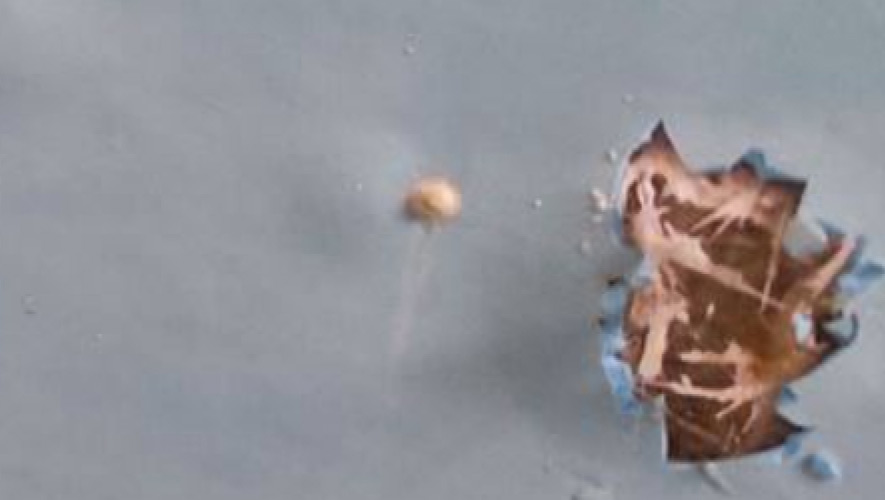
Steps to Repair a Fiberglass Pool with a PVC Membrane
Repairing a fiberglass pool with a thick reinforced PVC membrane is a straightforward process that restores the pool in 1–2 weeks. Here’s how it works:
Step 1: Assess and Prepare the Pool
- Inspect the Damage: Hire a specialist to evaluate cracks, leaks, or structural issues ($200–$500).
- Drain and Clean: Drain the pool. Clean the surface (e.g., with a pressure washer) to remove algae, stains, or loose gelcoat.
Time: 2–3 days.
Step 2: Smooth and Prep the Surface
- Sand the Gelcoat: Lightly sand the fiberglass to remove rough spots or flaking gelcoat, ensuring a smooth base for the membrane (professional sanding costs $500–$1,000).
- Install Laminated Profile: Attach a metal laminated profile around the pool’s upper perimeter to securely fasten the PVC membrane.
- Replace Plumbing: Replace skimmers, jets, and drains to ensure compatibility with the PVC membrane ($100–$500).
- Apply Underlayment: Lay a geotextile underlayment ($1,000–$2,000) to cushion the membrane and enhance walking comfort.
Time: 2–3 days.
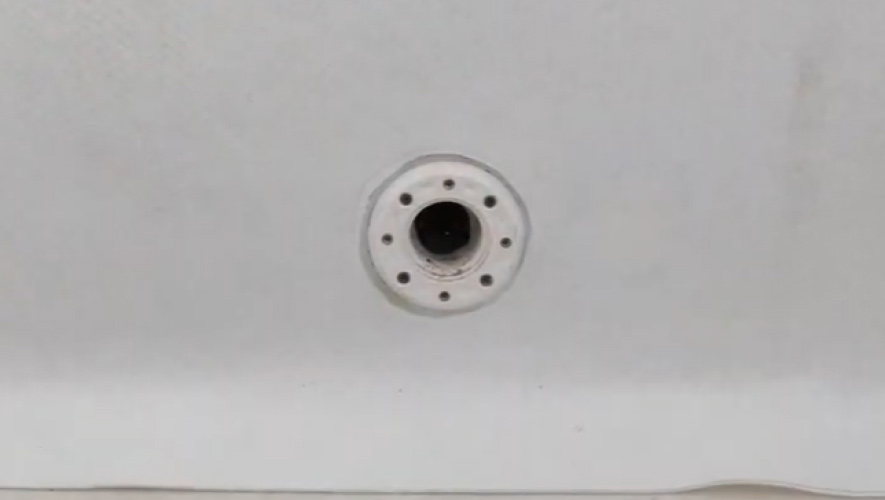
Step 3: Install the PVC Membrane
- Measure and Cut: Cut PVC membrane strips on-site to match the pool’s shape, accounting for steps, corners, and fittings.
- Weld Membrane Strips Together: Professionals weld strips with a double seam using a hot-air gun and attach the membrane to the laminated profile. After checking weld quality, seams are coated with liquid PVC for added strength, creating a watertight shell that covers cracks and defects.
- Reliable Attachment: Secure the membrane to skimmers, jets, and drains with watertight gaskets and stainless steel screws ($100–$300).
- Cost: $6,000–$10,000 for materials for a 15×30-foot pool.
Time: 1–3 days (depending on pool size and shape).
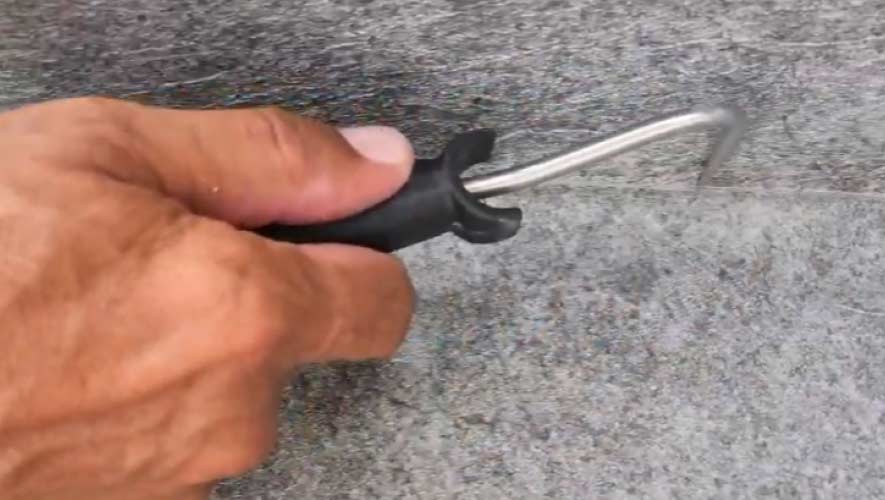
Step 4: Finish and Test
- Reinstall Coping/Decking: Reuse existing coping and decking or update as needed ($1,000–$3,000).
- Fill and Balance: Fill the pool with water and adjust pH (7.2–7.6), alkalinity (80–120 ppm), and calcium hardness (200–400 ppm). Add minimal algaecide ($50–$100) due to PVC’s algae resistance.
- Test for Leaks: Monitor water levels for 24 hours to confirm watertightness (pool can be filled 24 hours after applying liquid PVC to seams).
Time: 2–3 days.
General Terms and Cost for an Average Pool
Timeline: 1–2 weeks, compared to 2–4 weeks for traditional fiberglass repairs or 8–12 weeks for a full rebuild.
Cost: $10,000–$15,000 (including inspection, prep, membrane installation, and optional upgrades), vs. $50,000–$100,000 for a new pool or $5,000–$10,000 for recurring gelcoat repairs.
Why PVC Membrane Repairs Are Better, Easier, and Cheaper
- Better Durability: PVC membranes last 20–30 years, surpassing temporary gelcoat patches (3–5 years) and rivaling new fiberglass pools at a lower cost. Their flexibility and strength compensate for minor structural shifts, reducing the risk of cracks and leaks in the future.
- Easier Process: Installation avoids rebuilding, demolition, or heavy equipment, unlike a full reconstruction.
- Cheaper Solution: At $10,000–$15,000, PVC repairs save 70–85% compared to a new pool ($50,000+) and 50–70% vs. recurring gelcoat repairs ($5,000–$10,000 every few years). Annual maintenance is lower ($500–$1,000 vs. $1,000–$2,000 for fiberglass due to gelcoat upkeep).
- Simplified Maintenance: PVC’s non-porous surface reduces chemical needs by 15–20%, saving $50–$100/year.
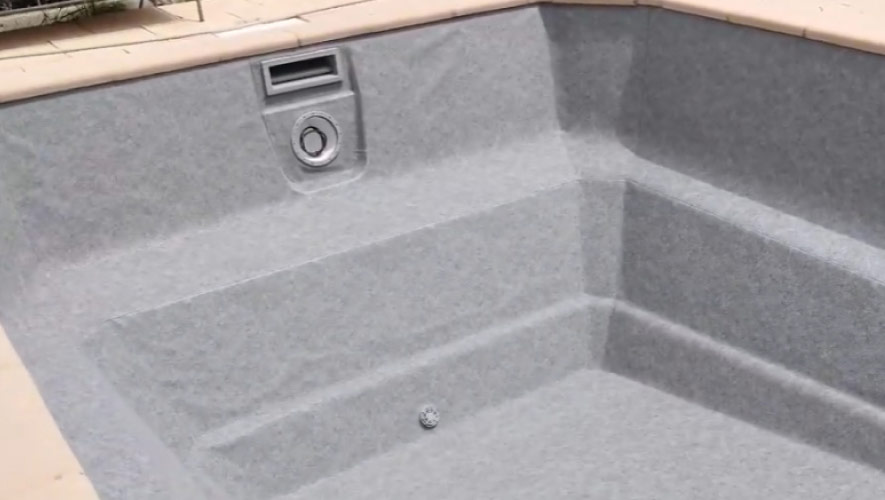
Additional Considerations
Customization: PVC membranes offer various colors and textures, realistically mimicking stone or tile, refreshing the pool’s look at minimal cost.
Professional Installation: Hire contractors experienced with PVC membranes, as poor installation can lead to leaks ($500–$2,000 to fix).
Have Questions?
Talk to our specialist! Just fill out the form, and we’ll give you a call!
Conclusion
Repairing a fiberglass pool with a thick reinforced PVC membrane is a superior, simpler, and more affordable alternative to traditional repairs or full replacement. By eliminating leaks, reducing maintenance, and offering a 20–30-year lifespan, PVC membranes restore functionality and aesthetics for $10,000–$15,000, saving up to 85% compared to a $50,000+ rebuild. The quick 1–2-week process, customizable designs, and minimal upkeep make it ideal for homeowners. Contact SAKKO POOL to purchase high-quality PVC membrane that will transform your aging fiberglass pool into a durable and vibrant centerpiece of your yard.
